As you shop for a new mattress, you’ve probably come across the terms ‘hybrid’ and ‘memory foam’. These refer to two different types of mattresses, each with its own pros and cons.
We’re here to make this process easier by breaking down the details of each mattress type, how they compare, and who we believe are the best sleepers for each one.
Hybrid vs. Memory Foam Mattresses
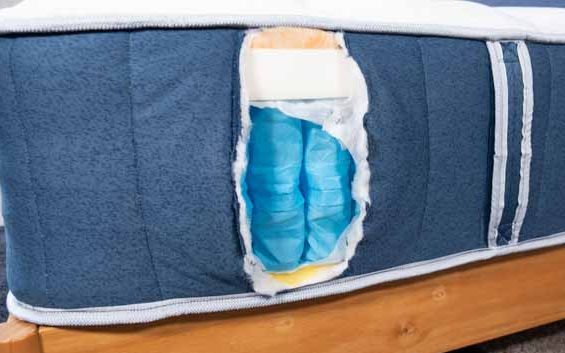
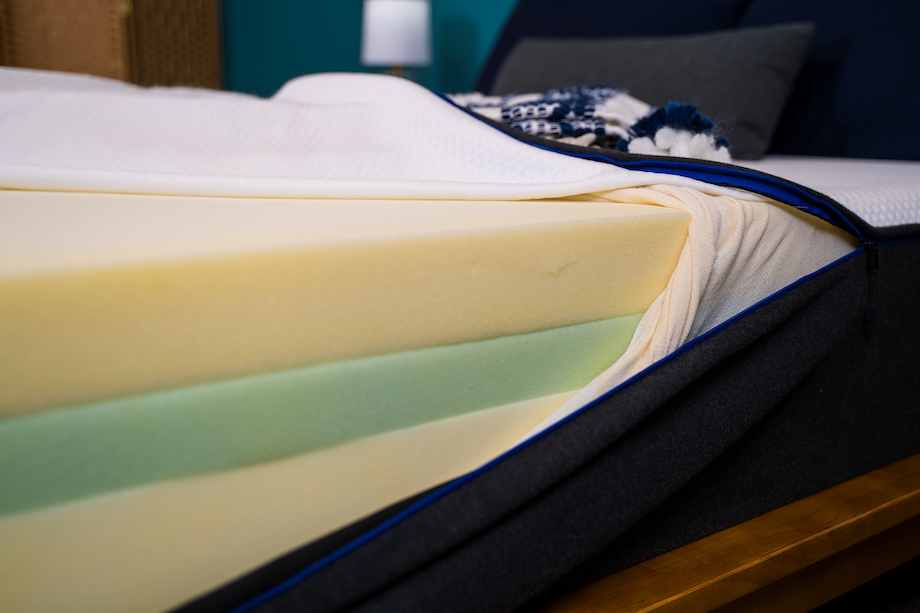
Let’s look at how these mattress types compare to one another in different consumer categories.
| Metric | Memory Foam | Hybrid |
|---|---|---|
| Average Price Range (Queen size) | $700 – $2,400 | $1,200 – $2,500 |
| Materials | Memory foam, poly foam | Steel coils, memory foam, and/or poly foam |
| How It Feels | Contouring, body-hugging | Supportive, responsive |
| Pros | Good pressure relief, Good support, Great motion isolation, Hypoallergenic | Sleeps cool, Easy to switch positions, Good support, More customization |
| Cons | Retains heat, Not much bounce, Off-gassing | Heavy to move, More expensive, Some motion transfer |
Price
Memory foam beds are slightly cheaper than hybrids, usually starting at around $700 for a Queen size, though this will also depend on the brand and any deals happening.
The cheapest hybrids can come in just over $1,000, but like memory foam ones, this will depend on the manufacturer, materials, special features, and current sales or promotions.
Budget and luxury options are available for both types.
Body Weight of Sleeper
Body weight has a lot to do with the performance of memory foam and hybrid mattresses. A bed won’t perform or feel the same for sleepers with vastly different body types.
- Lightweight Sleepers (less than 130 lbs) – A lightweight sleeper will likely prefer a memory foam bed. Mattresses feel firmer to lightweight individuals compared to average and heavy sleepers. Therefore, lightweight sleepers enjoy the soft cradle of memory foam, particularly if they lie on their side.
- Average Weight Sleepers (130-230 lbs) – An average-weight person should be pleased with either memory foam or a hybrid bed. In this case, you’ll have to think about other factors like your sleeping position, bounce, support, cooling, motion isolation, price, and pressure relief before purchasing either type.
- Heavyweight Sleepers (230+ lbs) – Heavyweight sleepers need all the support they can get to ensure their spine doesn’t get thrown out of alignment. For this reason, most people recommend hybrids for heavier individuals. The coils in hybrid mattresses will usually provide better support for heavyweight sleepers.
Feel
The feel of a bed depends on several factors, such as the materials and firmness level. Memory foam mattresses will have a slow response to them, and you should feel as though you’re gently being hugged by the material. Conversely, hybrids have more bounce, so you should feel more on top of the bed instead of in it.
Firmness
Memory foam and hybrid mattresses are available in multiple firmness options. This allows sleepers to find the perfect firmness for their sleep style. Mattress firmness is rated on a 1-10 scale, with 10 being the firmest. Most people enjoy a medium-firm feel that’s around a 5 or 6, but if you’re exceptionally lightweight or heavy, you may prefer something much softer or harder.
Between these two mattress styles, the contouring of memory foam may cause these beds to feel softer than hybrids. However, the coils in hybrids usually provide slightly more support than memory foam beds, even if they’re listed as having the same firmness level.
What Is a Hybrid Mattress?
A hybrid mattress is typically built with foam and coils. The foam is placed on top, while the coil unit is toward the bottom. The foams in hybrids can include memory foam, poly foam, latex, or a mix of these materials. Most hybrids feature pocketed coils, which means each coil is wrapped in fabric so that they react independently of one another as opposed to a traditional innerspring unit in which they move as one. Wrapping the coils helps minimize motion transfer.
Read More: What Is a Hybrid Mattress?
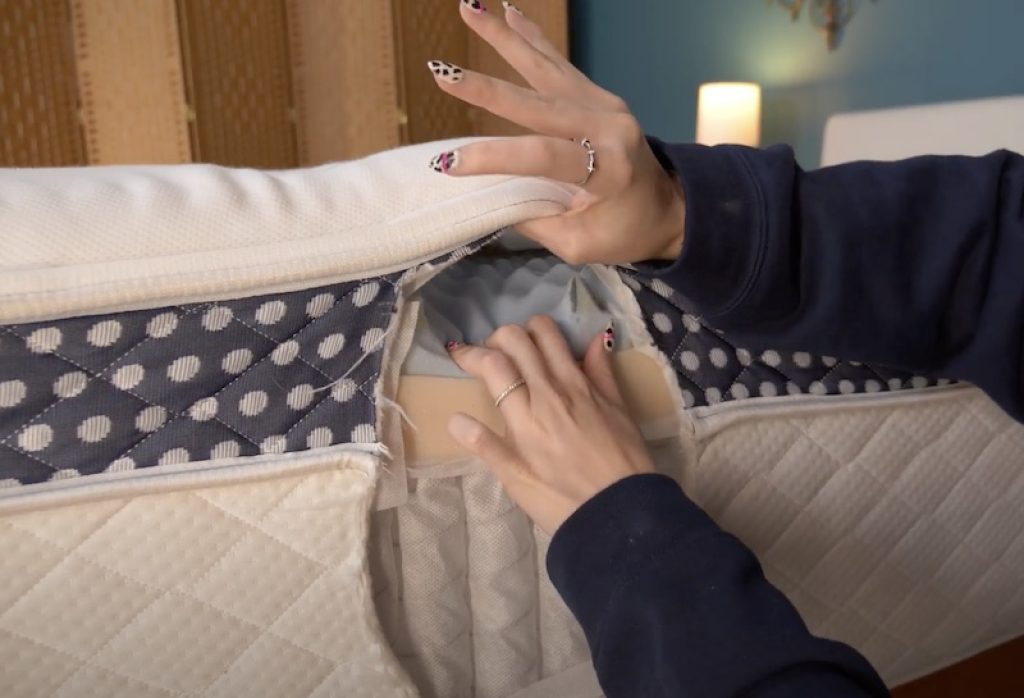
Best Hybrid Mattresses
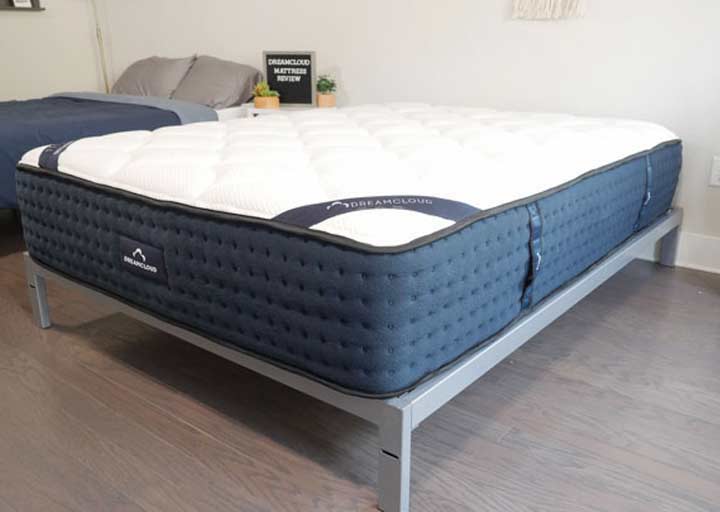
|
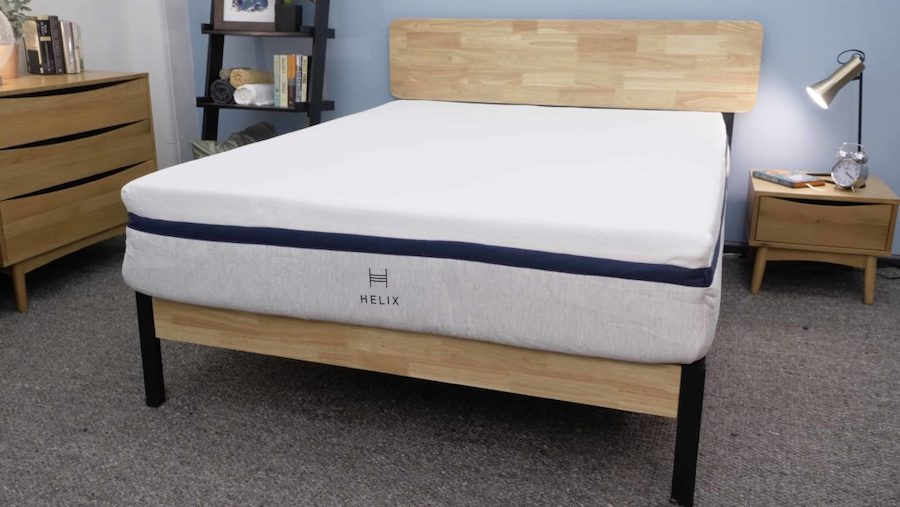
|
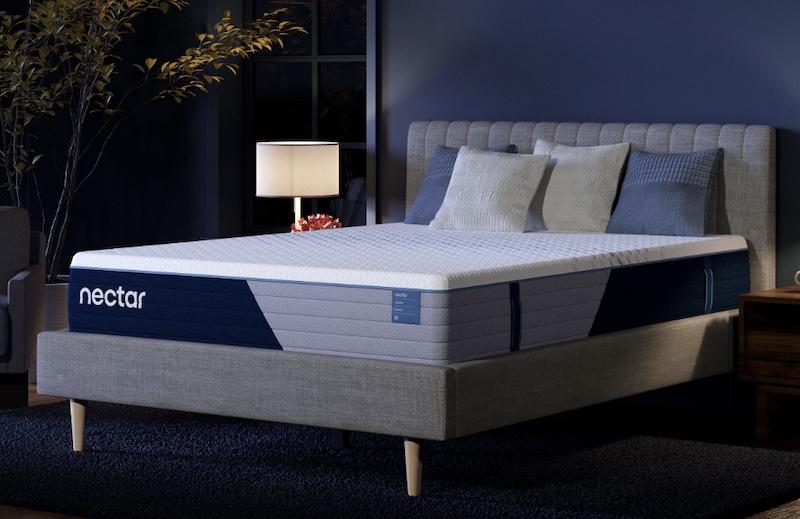
|
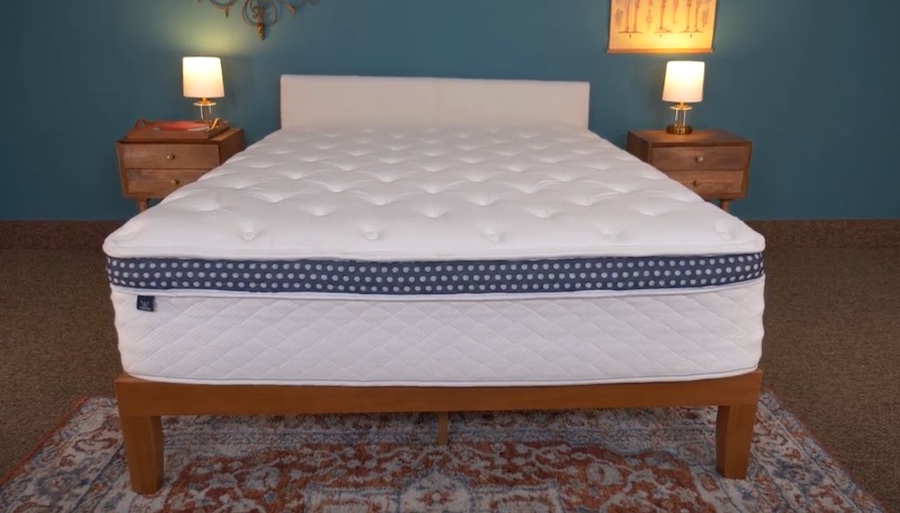
|
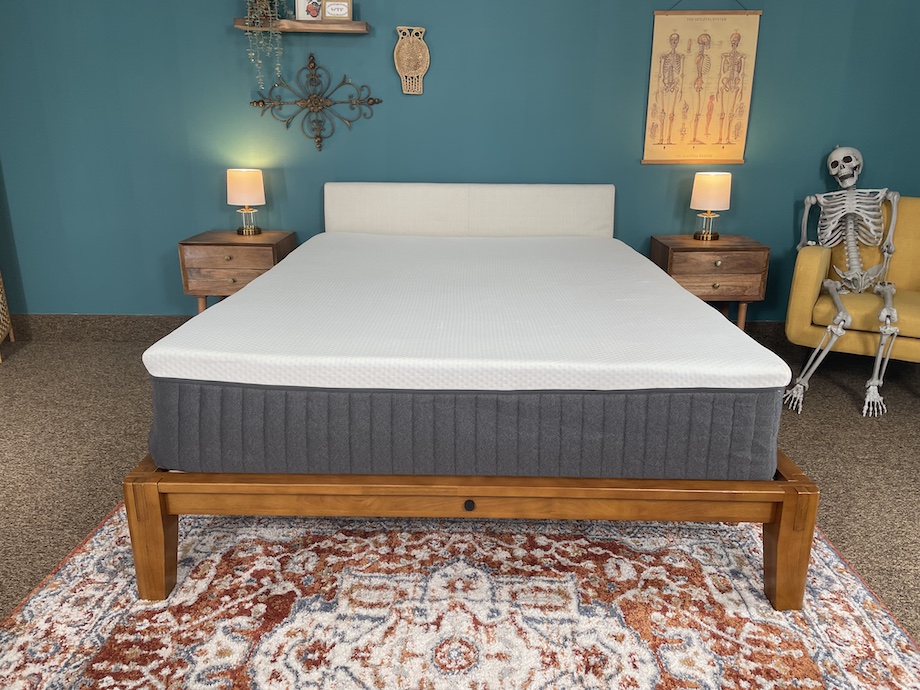
|
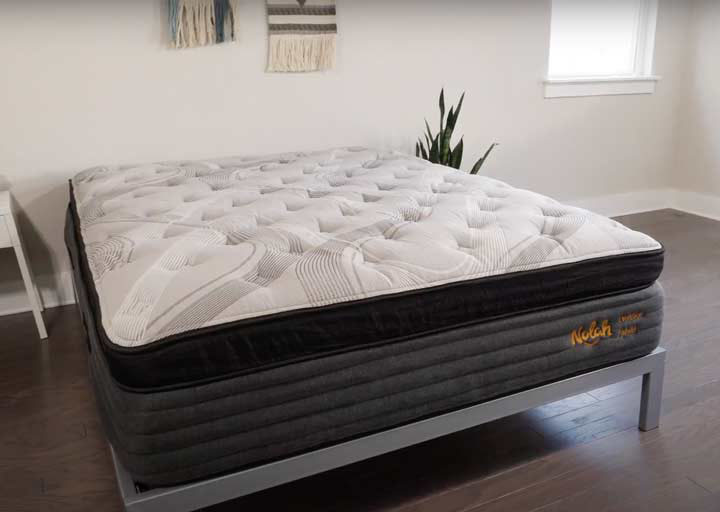
|
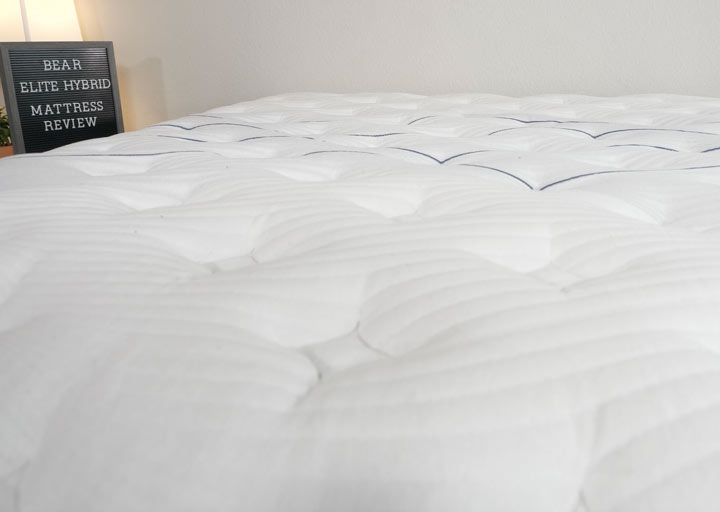
|
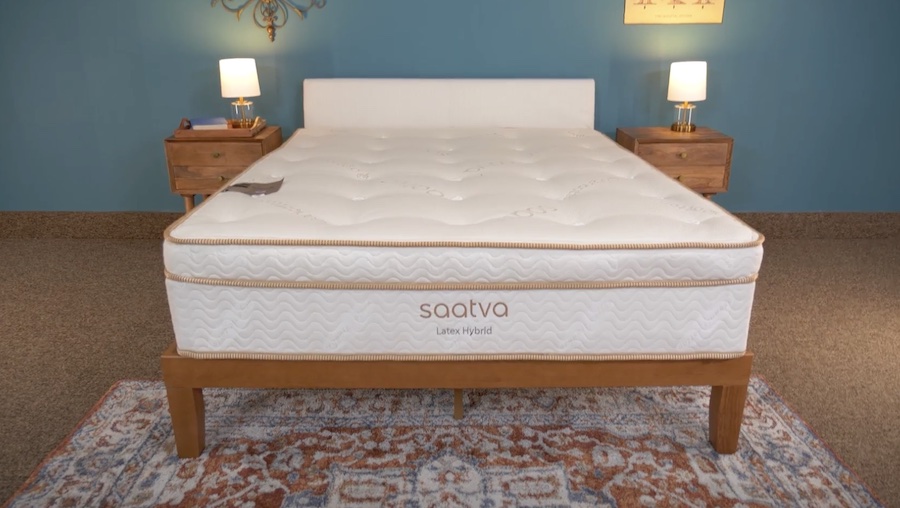
|
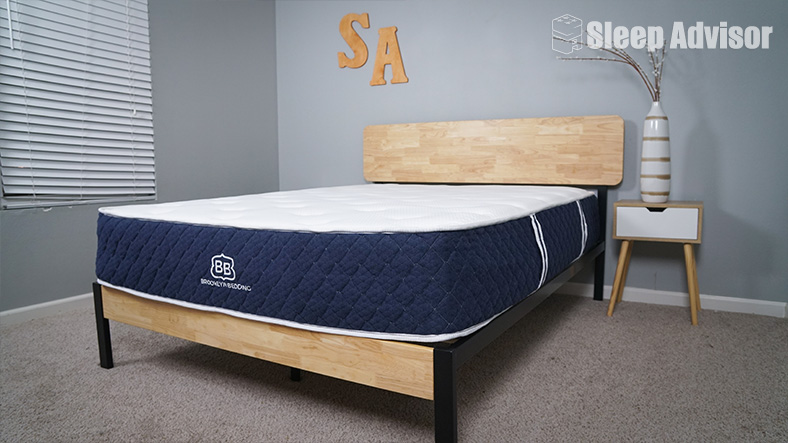
|
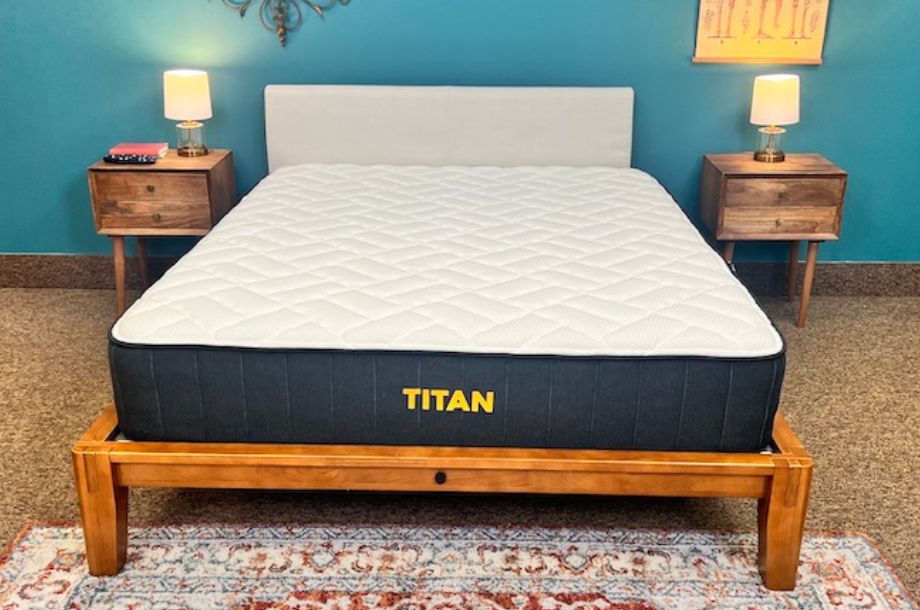
|
|
| DreamCloud Original Mattress | Helix Midnight Mattress | Nectar Classic Hybrid | WinkBed Mattress | Emma Hybrid Comfort | Nolah Evolution Hybrid Mattress | Bear Elite Hybrid Mattress | Saatva Latex Hybrid Mattress | Brooklyn Bedding Signature Hybrid | Titan Plus | |
| Rating | ||||||||||
| Firmness | Medium-firm: 6.5/10 | Medium-firm: 6/10 | Medium-firm: 6.5/10 | Multiple firmness options | Firm: 7/10 | Multiple firmness options | Medium-firm: 6/10 | Firm: 7/10 | Multiple firmness options | Firm: 8/10 |
| Material | Hybrid | Hybrid | Hybrid | Hybrid | Hybrid | Hybrid | Hybrid | Latex | Hybrid | Hybrid |
| Cooling | — | — | — | — | ||||||
| Warranty | Lifetime warranty | Limited Lifetime Warranty | Lifetime warranty | Lifetime warranty | 10-year warranty | Limited Lifetime Warranty | Limited Lifetime Warranty | Lifetime warranty | Limited Lifetime Warranty | Limited Lifetime Warranty |
| Shipping | Free shipping | Free shipping | Free shipping minus HI and AK | Free shipping | Free shipping | Free shipping | Free shipping | Free white glove delivery | Free shipping | Free shipping |
| Trial Period | 365 nights | 100 nights | 365 nights | 120 nights | 365 nights | 120 nights | 120 nights | 365 nights | 120 nights | 120 nights |
| Best For | Side Sleepers, Back Sleepers, Stomach Sleepers, Hot Sleepers, Seniors | Side Sleepers, Back Sleepers, Couples | Side Sleepers, Back Sleepers, Stomach Sleepers, Hot Sleepers, Back Pain | Side Sleepers, Back Sleepers, Stomach Sleepers, Hot Sleepers, Back Pain, Hip Pain, Seniors | Back Sleepers, Stomach Sleepers, Hot Sleepers | Side Sleepers, Back Sleepers, Hip Pain, Seniors | Side Sleepers, Back Sleepers, Hot Sleepers, Hip Pain, Seniors | Back Sleepers, Stomach Sleepers, Hot Sleepers, Back Pain | Side Sleepers, Back Sleepers, Hip Pain, Couples | Back Sleepers, Stomach Sleepers, Back Pain, Hip Pain, Seniors |
Advantages of a Hybrid Mattress
- Cooler – Hybrids are more breathable because of their coil unit, which fosters airflow throughout the bed. Plus, many brands include extra cooling features in their cover and foam layers.
- Easier Movement – Innerspring layers are great for bounce, which means the mattress quickly returns to its original shape after you put pressure on it. This quick response makes it easier to move around on the bed and get in and out of it.
- Good Support – Hybrids usually provide good support because of the coils in them. Coils are highly durable and strong, so they’re helpful for those who need more substantial support, such as heavier sleepers.
- More Variety – Though the basic model of a hybrid is foam on top and coils on the bottom, shoppers will find lots of variations among brands. This gives shoppers more options and customization.
Disadvantages of a Hybrid Mattress
- More Expensive – Hybrid mattresses feature an advanced design, which means they’re usually more expensive than their memory foam counterparts. That said, there are brands with budget mattresses available, including hybrid models.
- Less Motion Isolation – Motion isolation means that the mattress is built to reduce motion transfer across the mattress. This is usually most important for couples who want to reduce their risk of being woken up by their partner’s movements. Even though individually wrapping the coils will help, these beds will still have more motion transfer than memory foam ones.
- Heavier to Move – Hybrid mattresses are usually heavier than all-foam models, which could make them harder to transport. If you opt for an in-home delivery service, this shouldn’t be an issue, though many companies charge an extra fee for this. If you plan to move a mattress on your own, you’ll probably need extra help with the bed’s added weight.
What Is a Memory Foam Mattress?
Memory foam mattresses are designed to cradle the sleeper’s body, which typically results in excellent pressure relief. Most memory beds contain an all-foam structure with memory foam toward the top and a standard poly foam at the base, though you’ll find some variance with the number of layers and other features. Some hybrids contain memory foam, and while those could also be considered a ‘memory foam bed’, for this comparison, we will solely focus on the all-foam model.
For More Information: What Is Memory Foam?
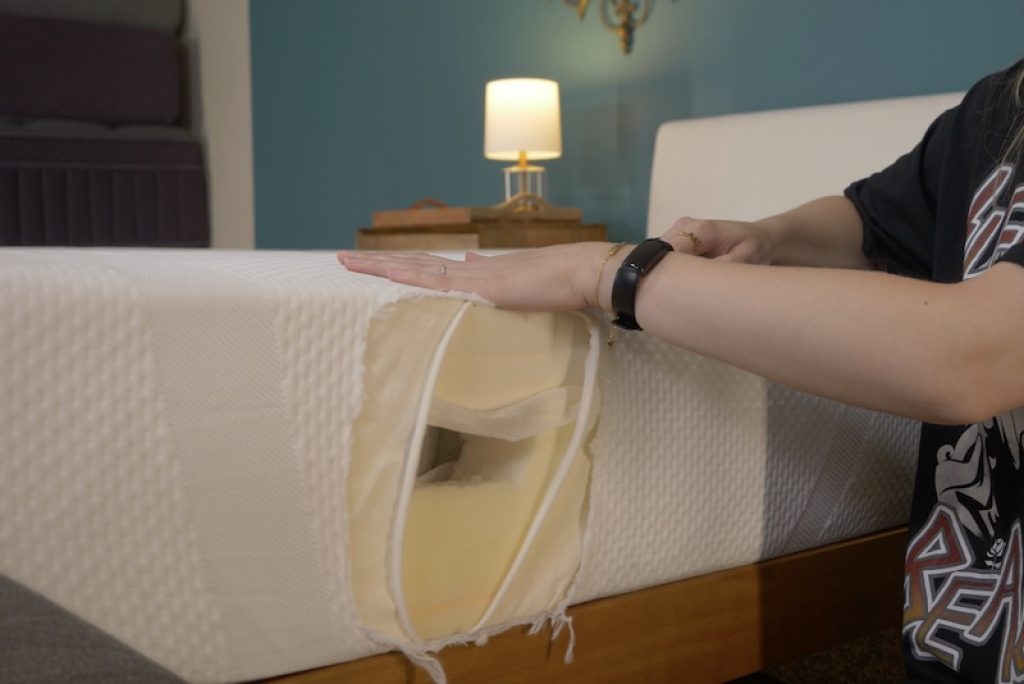
Best Memory Foam Mattresses
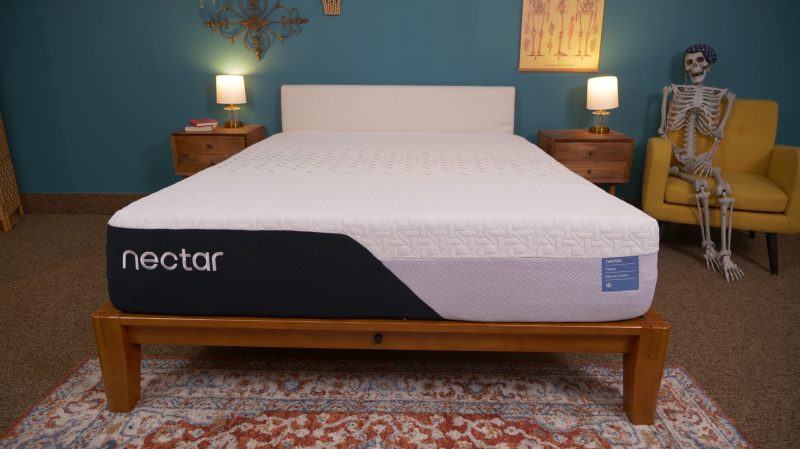
|
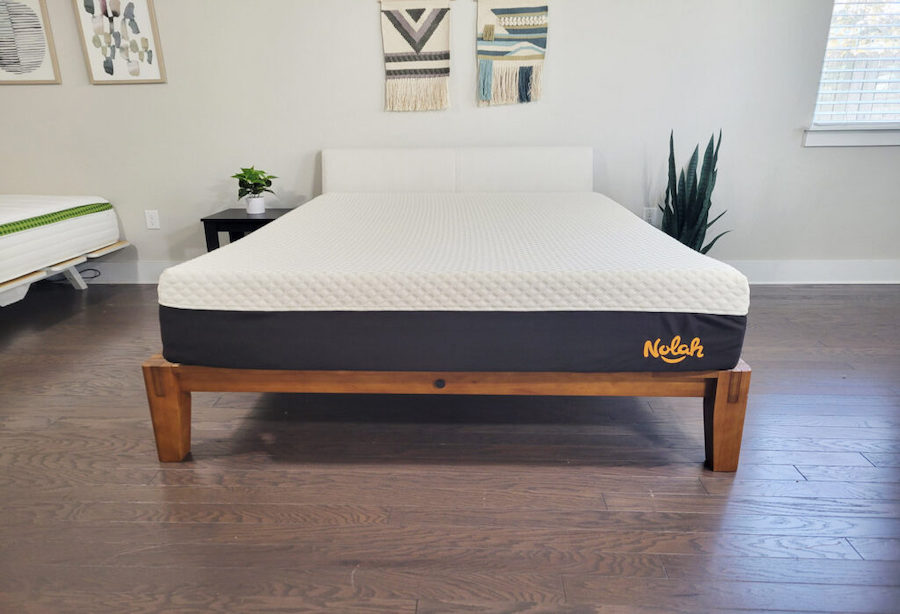
|

|
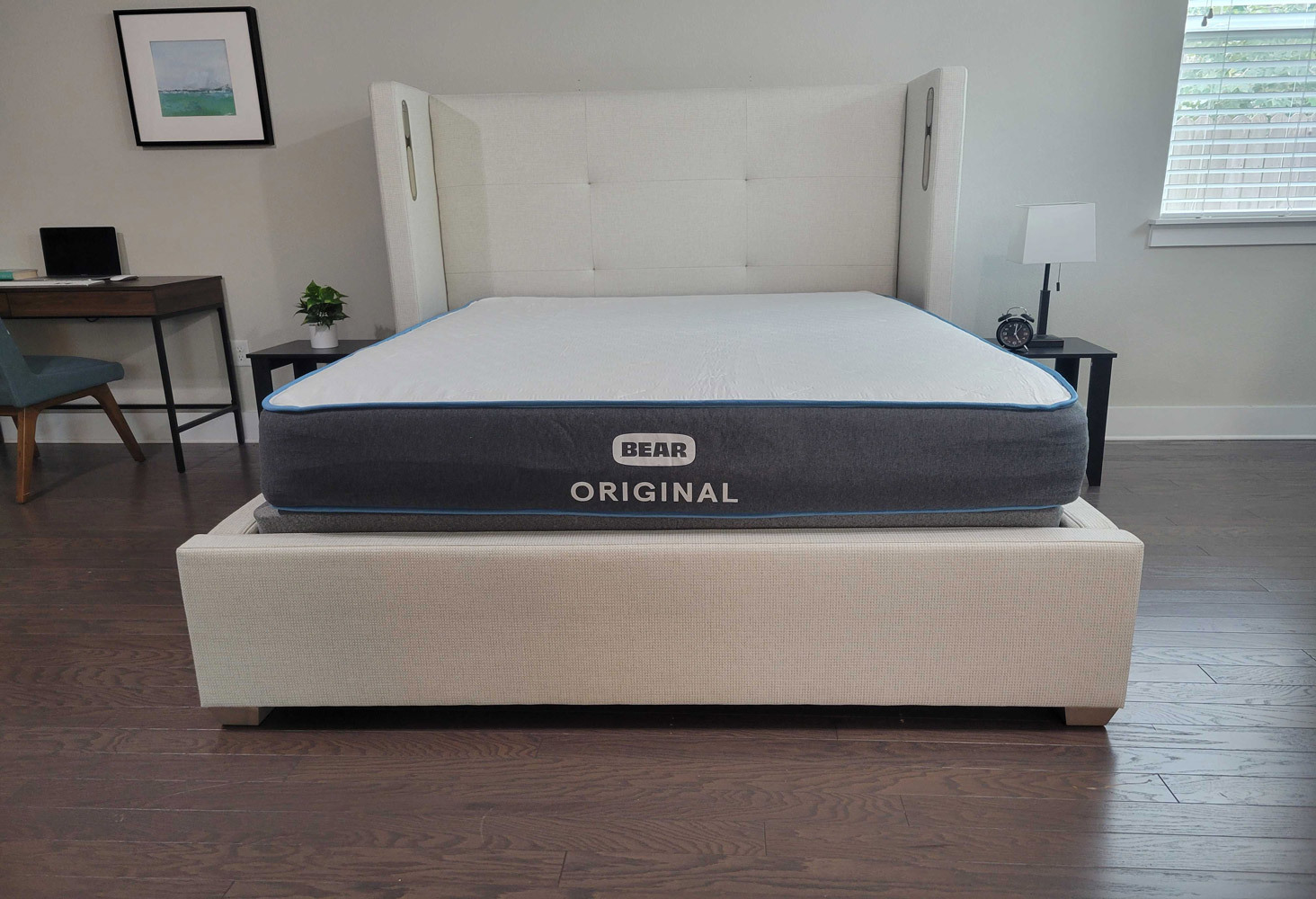
|
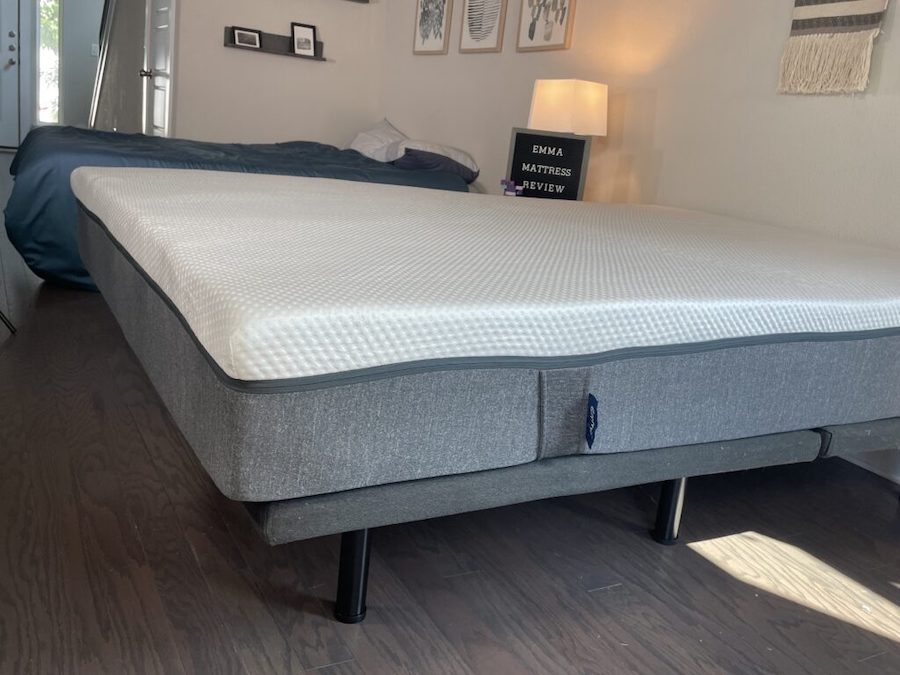
|
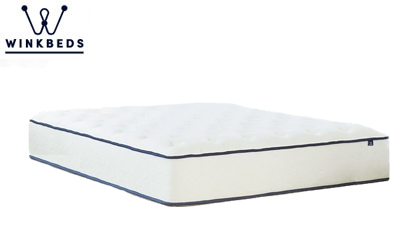
|
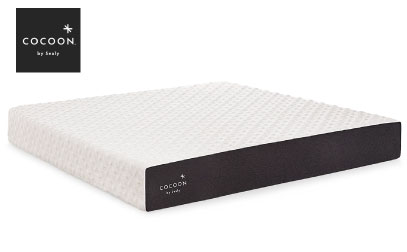
|
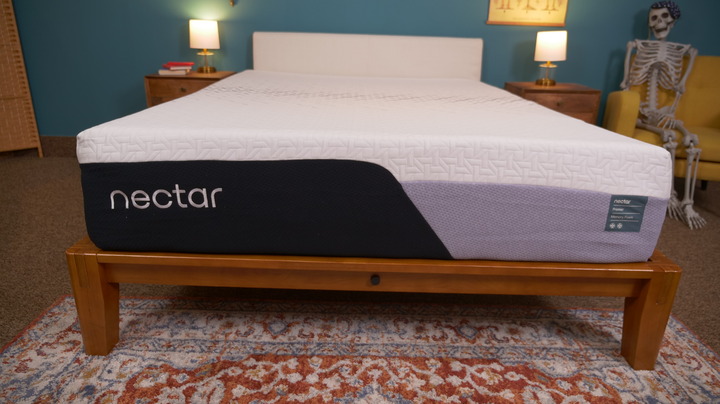
|
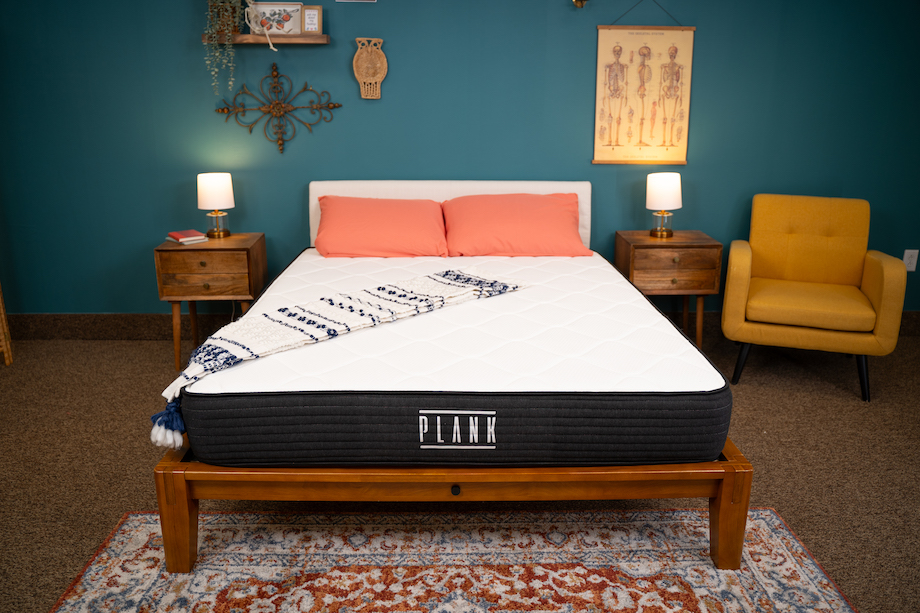
|
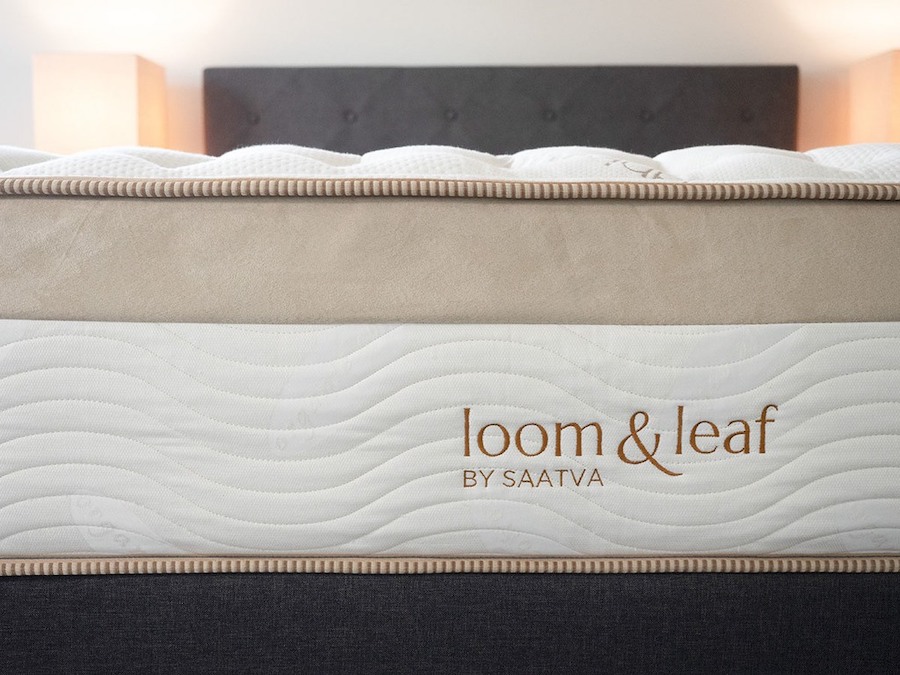
|
|
| Nectar Mattress | Nolah Signature All-Foam Hybrid Mattress | Helix Midnight Mattress | Bear Original Mattress | Emma Mattress | WinkBeds GravityLux Mattress | Cocoon Chill Mattress | Nectar Premier Mattress | Brooklyn Bedding Plank Firm Mattress | Loom & Leaf Mattress | |
| Rating | ||||||||||
| Firmness | Firm: 7.5/10 | Medium: 5/10 | Medium-firm: 6/10 | Firm: 7/10 | Medium: 5/10 | Medium-firm: 6/10 | Medium-firm: 6/10 | Medium-firm: 6.5/10 | Multiple firmness options | Multiple firmness options |
| Material | Foam | Foam | Hybrid | Foam | Foam | Foam | Foam | Foam | Foam | Foam |
| Cooling | — | — | — | — | — | |||||
| Warranty | Lifetime warranty | Limited Lifetime Warranty | Limited Lifetime Warranty | Limited Lifetime Warranty | 10-year warranty | Lifetime warranty | 10-year warranty | Lifetime warranty | Limited Lifetime Warranty | Lifetime warranty |
| Shipping | Free shipping | Free shipping | Free shipping | Free shipping | Free shipping | Free shipping | Free shipping | Free shipping | Free shipping | Free shipping |
| Trial Period | 365 nights | 120 nights | 100 nights | 120 nights | 365 nights | 120 nights | 100 nights | 365 nights | 120 nights | 365 nights |
| Best For | Side Sleepers, Back Sleepers, Stomach Sleepers, Back Pain, Couples | Side Sleepers, Back Sleepers, Hot Sleepers | Side Sleepers, Back Sleepers, Couples | Back Sleepers, Stomach Sleepers, Hot Sleepers, Hip Pain | Back Sleepers, Hot Sleepers, Kids | Back Sleepers, Hot Sleepers | Side Sleepers, Back Sleepers, Hot Sleepers | Side Sleepers, Back Sleepers, Stomach Sleepers, Back Pain, Hip Pain | Back Sleepers, Stomach Sleepers, Back Pain, Seniors | Side Sleepers, Back Pain |
Advantages of a Memory Foam Mattress
- Pressure Relief – One of memory foam’s most notable advantages is that it excels at pressure relief. The material is purposely designed to contour the sleeper’s shape, and as a result, this minimizes pressure buildup throughout the body.
- Great Motion Isolation – Memory foam does a great job at providing motion isolation, which means the material can absorb motion well. As a result, movement on one side of the bed won’t be felt on the opposite side. Motion isolation is usually most valuable to couples since they’re more likely to be disturbed by movement.
- Good Support – Many memory foam beds can provide good support, particularly ones that are denser and have an overall higher firmness rating. The support in these beds is usually provided by very dense poly foam layers toward the bottom. While coils may provide slightly more support in comparison, many people will find plenty of quality support from these all-foam beds as well.
- Hypoallergenic – Memory foam is considered a hypoallergenic product. The material’s density makes it harder for dust mites and other allergens to thrive there, which should help those with allergies sleep better.
Disadvantages of a Memory Foam Mattress
- Retain Heat – While the foam’s density has its benefits, this makes it prone to trapping warmth. For hot sleepers who frequently wake up from overheating, this could be a significant drawback. However, many manufacturers have added cooling features to memory foam to help with this issue.
- Minimal Bounce – Memory foam has minimal bounce. Instead, the material has a slow-moving feel to it, taking more time to get back to its original form after experiencing pressure. The lack of bounce could make it harder for combination sleepers and people with mobility issues to move about the bed.
- New Mattress Smell – When you initially unbox a memory foam bed, you will probably notice a new mattress smell, which is known as off-gassing. The smell is a result of the synthetic materials used in foam. Off-gassing typically goes away within a few days, and it’s good to give the mattress extra time to air out. That being said, some people who are sensitive to smells could be bothered by this. Organic beds usually do not come with strong odors and would be better if you’re concerned about this.
Which is Best for You? A Memory Foam or Hybrid Bed
Who Would Benefit From a Hybrid Mattress?
- Stomach and back sleepers – These folks should like these beds thanks to the support they offer. That said, these beds are available in multiple firmness levels, so even side sleepers may find a hybrid soft enough to relieve pressure in sensitive areas.
- Hot sleepers – Hybrid mattresses are great for hot sleepers because the steel coils allow more air to flow through, helping them stay cool throughout the night.
- Combination sleepers – Hybrids are also great for combination sleepers who need something bouncy enough to help them reposition easily.
Who Wouldn’t Benefit From a Hybrid Mattress?
- Some couples – Couples with different sleeping habits may not like hybrid beds because of motion transfer. Hybrids with steel coils usually don’t isolate motion, and neither do memory foam models. This means you may wake up your partner if you toss and turn at night.
- Budget shoppers – Also, hybrid mattresses are generally more expensive than memory foam models. Although some brands offer budget options, these are usually more costly than their memory foam counterparts.
Who Would Benefit From a Memory Foam Mattress?
- Couples with different sleeping habits – Partners with different sleeping habits should like memory foam because it does an excellent job of isolating motion. Memory foam absorbs motion, so you’re unlikely to feel movement when your partner tosses and turns.
- People who need good pressure relief – People who struggle with pressure buildup should also benefit from memory foam. Memory foam hugs the body and prevents pressure from accumulating in the shoulders, hips, and legs.
- Those with allergies – Lastly, those who live with allergies may find relief in a memory foam bed, as these are often considered hypoallergenic.
Learn More: Can Memory Foam Cause Allergic Reaction?
Who Wouldn’t Benefit From a Memory Foam Mattress?
- Hot sleepers – People who sleep warm are unlikely to benefit from memory foam mattresses because of the overheating. Memory foam is dense and doesn’t allow airflow as much as hybrids. As a result, it tends to overheat and make hot sleepers sweat even more than usual.
- Combination sleepers – This group of sleepers may not like the lack of bounce in a memory foam bed, as it can make it difficult to change positions.
- People sensitive to smells – Memory foam beds have a strong smell when you first unpack them. This is known as off-gassing and could be too intense for some people.
Hybrid vs. Memory Foam FAQs
Does a hybrid or memory foam mattress last longer?
Hybrids tend to last longer than memory foam mattresses due to their combination of foam and steel coils. The coils in the construction help keep the mattress sturdy and strong so that there’s less chance of sagging. The coils also help boost the bed’s durability.
Is a hybrid or memory foam mattress better for side sleepers?
Do you want a body-hugging sensation that contours your shoulders and hips when you sleep on the side? If the answer is yes, then you need a memory foam mattress. Sure, a hybrid with multiple comfort layers made from memory foam can be good at contouring, but a pure memory foam bed with just the right firmness offers an unmatched feel for side sleepers.
Are hybrid or memory foam mattresses softer?
There are no rules based on the type of bed alone. Some memory foam mattresses are firmer than hybrids and vice versa, so it’s always good to check the exact firmness. Look at the materials as well because memory foam tends to soften the more you lie on it due to your body temperature.
Final Word of Advice
Now that you’re armed with more knowledge of the differences between memory foam and hybrid mattresses, you should be better equipped to decide between these two styles. Each bed type comes with specific advantages and disadvantages. You’ll also need to see how these mattresses compare in categories related to your individual needs, such as price, sleep position, body weight, cooling, support, and pressure relief.
Once you decide whether a memory foam or hybrid mattress is right for you, we are here to help with our favorite memory foam and hybrid models, which include detailed reviews and information about each product.
The Advisor Says
Take some time to research the options, always keeping in mind your body weight, shape, and preferred sleeping position. If you can, stop by a mattress store to feel both types in person, as this can help you pick between the two.

Jill Zwarensteyn
Senior Editor
About Author
Jill Zwarensteyn is the senior editor for Sleep Advisor and a certified sleep science coach. She is enthusiastic about providing helpful and engaging information on all things sleep and wellness.
Combination Sleeper
Education & Credentials
- Certified Sleep Science Coach